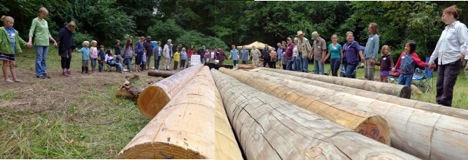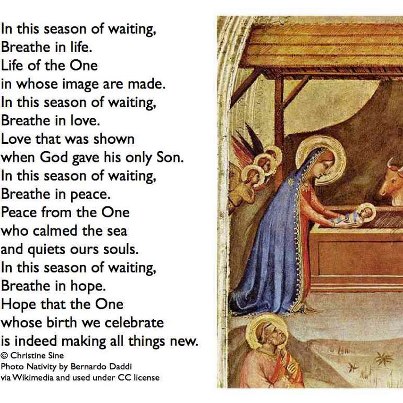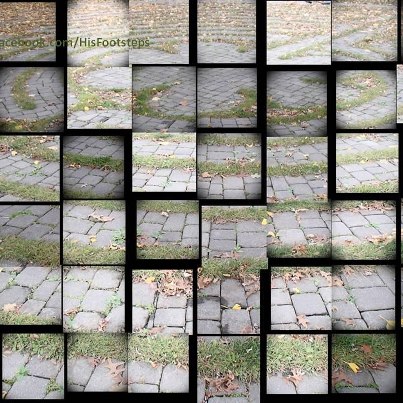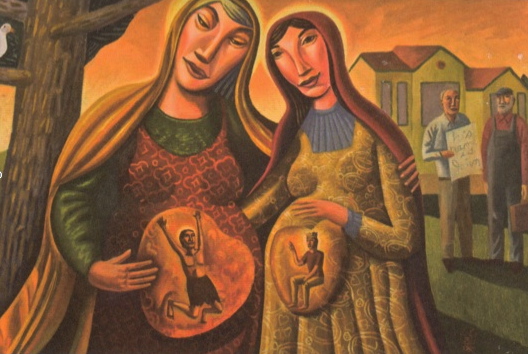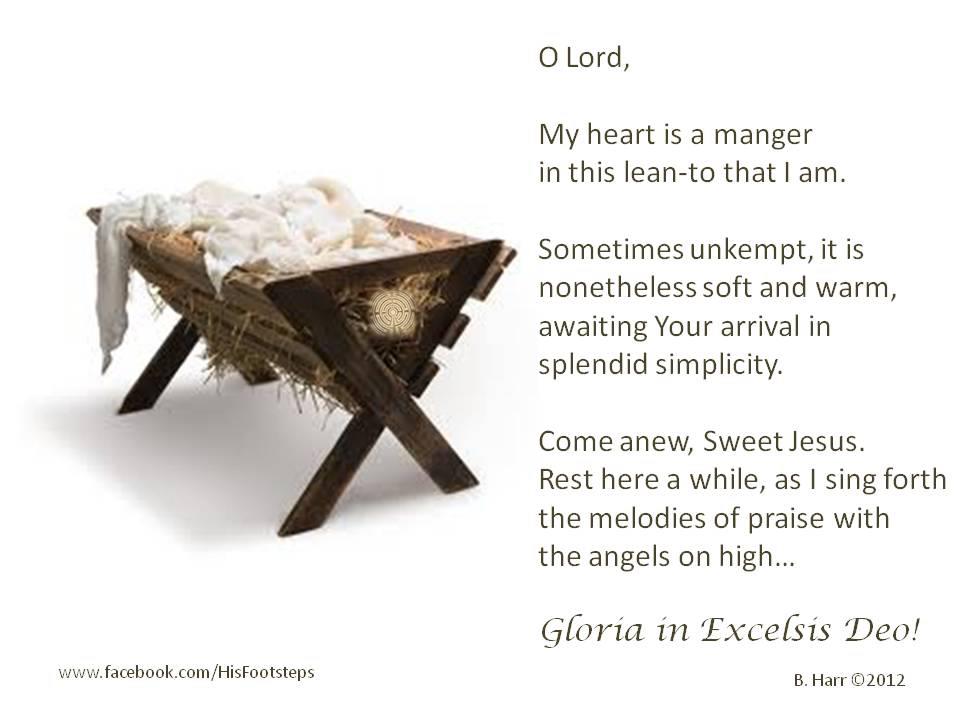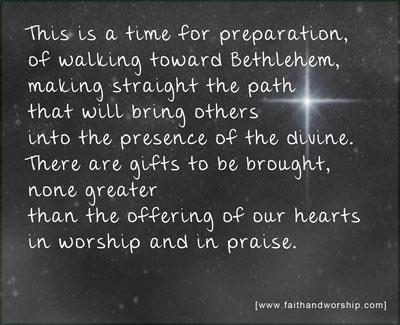“And God himself will choose the sign… A frightened woman in her time… Will bear a son and name him well… God with us! O come, O come Emmanuel!”
These beautiful lyrics from the song the Oracles by Steve Bell words were the focus of our Advent II Homecoming party this last week, a time at which we remember not just the birth of a child two thousand years ago, but the promise of a new world coming in which justice will come for the poor and hope for the marginalized. Tom and I love this season of the year with its expectant promise of hope and fulfillment. Each morning we light our Advent candles, sit in their warm glow, and listen to Advent music while we eat breakfast. We finish with scripture reading and prayer.
This year held many celebrations and festivals for us. In June we headed to Australia for Christine’s mother’s 89th birthday. In July we celebrated our 20th wedding anniversary and in August we celebrated together with many MSA friends, at our annual Celtic retreat, rejoicing at the beginning of our building for the Mustard Seed Village. The poles for our first classroom became the focal point for our fellowship In the afternoon their dedication drew us together again into our dreams and hopes for the future. We expect to have them in the ground and the concrete slab poured before the end of the year. This will house classes on sustainability as well as place for people to imagine and create new ways God can use their lives and communities to have an impact in the lives of others.
We also hosted a number of BBQs and other meals at the house, sharing hospitality with people from around the world and feasting from our bountiful garden produce. Tom’s Bacon and Tomato sandwiches are to die for.
Our participation in Wild Goose East in North Carolina, Wild Goose West in Oregon and Creative World Festival in British Columbia also gave ample opportunity for celebration. These festivals brought us together with a rich array of friends old and new, stirred our imaginations with inspiring talks and invited us to live out the kingdom in our everyday lives. More recently we celebrated with Mark and Lisa Scandrette and the Reimagine Tribe in San Francisco. We walked the streets where Tom grew up, reminiscing and soaking in the stories of how they are making a difference in the lives marginalized people in their city.
My new book Return to Our Senses: Reimagining How We Pray is also part of the good news that God is still with us. It invites the reader to see prayer as far more than words. It introduces a rich array of experience that affirm God’s presence in every moment and in aspect of our lives. Today is the last day to order it from Amazon for a Christmas delivery, or download it for your kindle. This blog, Godspace which increasing focuses on how to reimagine prayer and spiritual practices for the future, continues to grow in popularity and is consistently listed in the top 100 Christian blog sites. The current Advent series has been particularly popular and enriching. I have certainly benefited from the posts and I hope you have too.
The Light for the Journey prayer page also grows in popularity with the addition of inspiring new content from John Birch, Bonnie Harr , Micha Jazz and other contemplative activists. My growing desire is to provide a place where others can share the creative gifts God has given them. Both Godspace and Light for the Journey provide those opportunities. We will further expand the authorship of both these venues in the next year so if you are interested let me know or sign up for the Godspace writers group.
Tom’s good news is the beginning of a new book on imagination and innovation. It is designed to enable readers to discover creative new ways God can use their mustard seed to be a difference and make a difference in response to rapidly changing times. He is also blogging about the ideas from the innovative edge on the MSA web site.
As we race towards a fiscal cliff in the US, a slowing global economy throughout our planet and continuing bloodshed and volatility in the Middle East… thank God there is good news! We can in these uncertain times share this good news by how we live and care for our vulnerable neighbors locally and globally. We want to hear your stories of innovative ways followers of Jesus in your community make a little difference in your community. Can you send us your stories so we share this good news with people throughout our global village too?
Our MSA Team and Board are involved in the very ambitious task of refocusing MSA as a center for Christian imagination and innovation…to help us all discover how we can become much more of God’s good news in these tough times. We are so grateful to God for Cindy Todd and the innovation she brings to our small team and Andy Wade whose tireless work makes our ability to communicate with you possible. Our growing circle of supporters and volunteers are constantly blessing in the midst of all we do. Please consider joining us in this venture. Your year end donation to Mustard Seed Associates will help keep this blog and the other ministries of MSA alive.
 MSA is a 501c3 not-for-profit organization. All donations are tax deductible.
MSA is a 501c3 not-for-profit organization. All donations are tax deductible.
We wish you and yours a joyous Christmas and a new year filled by creative new ways to be a bit of God’s good news in times like these.
Tom & Christine Sine
Like all of us I continue to struggle with the horrific events in Connecticut. This morning I was sent several links to posts that talk about this and articulate far better than I ever could our very limited understanding of God’s viewpoint.
First this thought provoking post from Brian Draper. It was first posted on 17 December 2012 as part of Brian Draper’s advent 20 email series
When Herod realised that he had been outwitted by the Magi, he was furious, and he gave orders to kill all the boys in Bethlehem and its vicinity who were two years old and under, in accordance with the time he had learned from the Magi. Then what was said through the prophet Jeremiah was fulfilled: ‘A voice is heard in Ramah, weeping and great mourning, Rachel weeping for her children and refusing to be comforted, because they are no more.’
Matthew 2:16-17Lest we forget, one episode of the Christmas story is always written out of the school plays. In fact, the good news of great joy to all people spelled near immediate disaster for parents in Bethlehem, whose little boys were in the wrong place at the wrong time. Once the Magi had given Herod the slip, he tried, in evil fury, to snuff out the threat of a newborn King of the Jews. Scholars believe that in a town of around 1,000, such as Bethlehem was back then, there’d have been around 20 children killed.
20 children.
John Eldredge reminds us that humanity is a battleground. ‘I am staggered,’ he writes, ‘by the level of naivety that most people live with regarding evil. They don’t take it seriously. They don’t live as if the story has a Villain. Not the devil prancing about in red tights, carrying a pitchfork, but the incarnation of the very worst of every enemy you’ve met in every other story. Dear God – the Holocaust, child prostitution, terrorist bombings, genocidal governments. What is it going to take for us to take evil seriously?’
‘One of the things that surprised me,’ wrote C.S. Lewis in Mere Christianity, ‘when I first read the New Testament seriously was that it talked so much about a Dark Power in the universe – a mighty evil spirit who was held to be the Power behind death, disease, and sin… Christianity agrees… this is a universe at war.’
We are painfully, dreadfully reminded – since the events of last week in Newtown, Connecticut – that the advent of Christ is not, in fact, a kitsch nativity scene in a mall in mid-winter; nor a sentimental moment for the kids to shine, as the star, or Mary, or Joseph, in the play, lovely though that is… but a crucial moment in a battle played out both on a cosmic scale and in our own hearts. ‘The coming of Jesus was… a dangerous mission,’ says Eldredge, ‘a great invasion, a daring raid into enemy territory.’
And lest we forget, advent has nothing to do with the triumph of religion, nor the vindication of our own belief system, but the incarnation of the very best of every hero we’ve met in every other story, fighting for us. Dear God – what is it going to take for us to take this seriously?
Dear God. Dear God.
The following excerpts are from a post by Rachel Marie Stone. She shares a variety of other links and insights on her post Look for the Helpers and love the Children.
from Katherine Willis Pershey:
“this is how God comes to us: covered in blood and vernix, born in a barn as an impoverished peasant. And later, covered in blood and tears, killed on a cross as an ordinary criminal.
This is how God comes to save us. It doesn’t make sense. It isn’t even finished; we continue to wait and ask: how long, O Lord, until you come again to judge the living and the dead? But at the heart and soul of the Christian faith is the conviction that God, in the entirely unique person of Jesus Christ, shall make all things new. Every tear shall be wiped away, every sin forgiven. Every loss restored.”
from Garry Wills in the New York Review of Books:
“The gun is not a mere tool, a bit of technology, a political issue, a point of debate. It is an object of reverence. Devotion to it precludes interruption with the sacrifices it entails. Like most gods, it does what it will, and cannot be questioned. Its acolytes think it is capable only of good things. It guarantees life and safety and freedom. It even guarantees law. Law grows from it. Then how can law question it?
Its power to do good is matched by its incapacity to do anything wrong. It cannot kill. Thwarting the god is what kills. If it seems to kill, that is only because the god’s bottomless appetite for death has not been adequately fed. The answer to problems caused by guns is more guns, millions of guns, guns everywhere, carried openly, carried secretly, in bars, in churches, in offices, in government buildings. Only the lack of guns can be a curse, not their beneficent omnipresence.”
from Mother Jones: “A Guide to Mass Shootings in America”
and of course, from Mister Rogers:
“When I was a boy and I would see scary things in the news, my mother would say to me, ‘Look for the helpers. You will always find people who are helping.’ To this day, especially in times of ‘disaster,’ I remember my mother’s words, and I am always comforted by realizing that there are still so many helpers – so many caring people in this world.”
a clip from the viral photo/quote, copied under fair use
And last these helpful resources from Brene Brown at Ordinary Courage
Lord, help me send love and light to those in pain. Let me stay calm and openhearted while I manage my own fear and anger. Help me remember that news coverage is traumatizing for me, not healing, and that my children need safety and information, not more fear.
Here are resources that I find helpful for talking to children about violence and death:
An excellent Q-and-A about talking to children about the Sandy Hook shootings from The Children’s Hospital of the King’s Daughters.
The American Academy of Pediatrics on School Shootings
University of Minnesota on Talking to Kids About Violence Against Kids
National Association of School Psychologists on Talking to Children About Violence
What I consider to be one of the best articles on talking to children about death (by Hospice)
Explaining the news to our kids from Common Sense Media.
No matter how experienced the helpers, their lives will be changed today. Thank them. Pray for them.
Last week’s Light for the Journey prayers were refocused by the tragic happenings in Newtown CT as represented by this beautiful prayer by Bonnie Harr. However there were still some beautiful Advent prayers posted during the week.
God in this season ,
Suspended between hope and fulfillment,
Let we never forget what you have done.
May we be overwhelmed by your mercy,
Which flows in wave after wave.
May we be honest about the darkness within us,
May we make straight the path for the Lord,
That together we may see God’s glory revealed.
(Adapted by Christine Sine rom weekly Advent reflections by Mark Pierson)
http://adventinart.org/
May we never be afraid
to come to you in prayer,
bring those things
that trouble us
or cause us pain
and lay them at your feet.
May we never be afraid
to come to you in faith,
kneel and reach out
to touch your hem
knowing our needs are met.
May we never be afraid
to come to you as Lord,
acknowledge you
as Son of God
and in your strength
tell others of your Grace.
May we still our hearts,
slow our steps,
and take time to listen.
May we lay aside our distractions,
and open our eyes to see the path,
that leads to the place
where Christ is born afresh in our hearts.
The wonder of Christ’s birth,
The glory of your breaking in upon us,
From darkness to light,
From fear to hope,
From sorrow to joy,
We watch for the glimpses,
Your new world coming, breaking upon us now.
freely offered,
accepted in gratitude,
proclaimed to the world.
This day is your gift,
Thank you, Lord.
and unbelief,
when worldly pressure
or circumstance
become the distance
between us,
draw near, we pray.
Remind us of the grace
that we first knew,
your healing touch,
the Spirit’s breath.
Grant us courage,
a faith that endures
and the sure knowledge
that you are with us
in our journeying,
now and always.
troubled, broken or at ease,
a sacrificial offering
for you to use.
Take away our selfishness
and teach us to love as you loved.
Take away our sense of pride
and show us the meaning of humility.
Take away our blindness
and show us the world through your eyes.
and teach us how to give as you gave.
Show us your ways
Teach us your paths
That we might walk with you more closely
Our hand in your hand
Our feet in your footsteps
From the baby in a stable
To eternity, Amen
Each year my good friend Mark Pierson sends me a copy of his Advent reflections written for the spiritual nurture of World Vision NZ staff. This year he chose the art of James Janknegt whose powerful contemporary images of the Christmas story formed a wonderful focus for my own visio divina meditations each week. This is a prayer tool I discovered while researching my book Return to Our Senses. I find it to be particularly helpful at this season.
Most of my meditations around my Advent theme, Let Us Wait As Children Wait, have revolved around joy, promise, hope, expectation. However, as I contemplated The Visitation I was struck by this fresh image of children waiting that I had not really considered before, the two unborn infants waiting in the loving embrace of the womb, waiting in darkness, waiting in uncertainty, waiting to change the world.
Their waiting must have been filled with a great deal of background anxiety, however. One would be born to an unmarried mother who could easily have been rejected and outcast by her family. The other would be born to a woman past her childbearing age, a wait in seclusion, perhaps because of her embarrassment at this unexpected blessing. Both of them waiting to be born into a turbulent and violent world that would eventually kill them both.
In Janknegt’s painting, the potential of Jesus and John waiting in the womb is obvious – one will become a king, the other a messenger. How many children born today wait for a future in which they will never fulfill their full potential I wondered? For how many is their time in the womb a waiting for an uncertain and vulnerable future? Perhaps their mothers are drug addicts or refugees born into a world that wants to keep them out of sight. Maybe their families live on the edge of starvation and they are waiting to be born only to die before their first birthday. Some wait for a life of abuse and abandonment, others for a life of suffering and pain.
The waiting of the unborn should be a joy filled season of hope and expectation, that is what we most like to focus on at this season. How I wonder, can I make that hope and promise made possible through the child whose birth we await, become a reality for some of those vulnerable ones at the margins for whom waiting holds so little hope.
Not surprisingly this week prayers posted at Light for the Journey have focused on Advent and our waiting for the coming of Christ. Lots of beautiful rich prayers about this season of preparation. Enjoy
Lord Jesus Christ we await your coming,
We wait filled with hope,
Knowing your light will shine in the darkness.
We wait anticipating your peace,
Believing that one day it will fill our world.
We wait embracing your love,
May we reach out to share it with our neighbours.
We wait with joy,
Bubbling us in expectation of your birth.
Lord we wait,
Come soon and fill us with your life.
Christine Sine 2012
———————————————
Let us kneel in the darkness,
Until we see God’s light emerge.
Let us wait with hope filled hearts,
As Christ’s image grows within us and shows us life.
Let him speak to us and teach us love,
Until we open our hearts to be his home.
Christine Sine 2012
————————————————-
advent
eyes straining to see
dim light, dark glass, confusion
God’s future unfolds
longing, not ready
distracted by life’s worries
barren soil destroys new life
revealing parched soul
another year gone
unplanned, unprayed, disjointed
all creation waits
advent calls my name
scraping scales of death from eyes
God’s future unfolds
Immanuel
St. Nicholas’ Day, 2009 AFWade
we journey with you,
to Bethlehem’s stable
and a new-born King,
ears attuned
to the song of angels,
eyes alert
for Bethlehem’s star.
Forgive us
if on our journey
by the tempting offers
of this world.
Keep our hearts aflame
with the hope
of Christmas,
and the promise
of a Saviour. Amen(www.faithandworship.com)
And we await his birth.
Let us throw off our distractions,
And allow the chaos to settle.
Let us watch for the signs,
And listen to the messengers.
And shout aloud and sing.
Something new is emerging,
Something new is being birthed.
And we wait in joyful expectation,
Draw close, Lord Jesus Christ,
Shed your light on all that is filled with darkness.
The coming of our Lord is near,
And we wait with hope filled hearts,
Draw close, God’s beloved son,
Teach us the wonder of your all embracing love.
Let us watch for the one who heard our cries and shouldered the suffering of our world,
Let us anticipate the coming of Christ’s eternal world with wholeness, reconciliation and plenty for all.
Let us wait in expectation for the day when God’s glory is revealed in all its fullness.
of hope and mystery,
anticipation,
preparation,
a kingdom
of this world and the next,
and a king
appearing when we least expect.
Heaven touching earth,
the footsteps of the divine
as once they did in Eden,
and a people,
searching for a Saviour
and walking past
the stable.
Open eyes and hearts,
that this might be
an Advent of hope to the world.(www.faithandworship.com)
There are an incredible number of Advent books out there each year, so I thought that I would get a sense of what some of my friends are listening to so a couple of days ago I asked my Facebook friends what they recommend reading or listening to during Advent. Here are some suggestions that you might like to check out. Some of these are totally new to me and will make great resources for my own Christmas reading and listening. Enjoy!
Several people suggested the gospel stories particularly the book of Luke. I agree I try to read through these each Advent season. It beautifully anchors me in the biblical story.
Leonard Sweet and Don Pape like Touching Wonder: Recapturing the Awe of Christmas – John Blase
Cindy Fortune Spenser recommends The Christmas Mystery by Jostein Gaarder
Sonja Naylor Andrews suggests “How the Grinch Stole Christmas,” by Dr. Suess
Joy Larsen likes Lion and the Lamb by Brennan Manning.
Kevin Palau suggest Martin Luther’s Christmas Book compiled by Roland Bainton
Kurt Neilson suggests Bernard of Clairvaux’s homilies on the Song of Songs. – they can be downloaded from this site or purchased from Amazon.
Tamara West recommends Gertrud Mueller Nelson, in both To Dance With God ( family and parish observance of the church year) and Here All Dwell Free ( a Jungian-feminist analysis of classic fairy tales). You can also see a great recording with Gertrud on YouTube
My friend Paul Samuels has written a delightful children’s book Where is Christmas?
Jill Aylard Young is enjoying “Simply Wait, Cultivating Stillness in the Season of Advent” by Pamela Hawkins.
Chris Terry Nelson suggests Insurrection by Peter Rollins
Catherine Windsor recommends The Mitten by Jan Brett
David Bayne suggests “Monastery Journey to Christmas” by D’Avila-Latourrette and “Silence and Other Surprising Invitations of Advent” by Enuma Okoro
Jane Bishop Halteman likes anything by Jan Richardson (Night Visions) or Ann Weems (Journey to Bethlehem) This last link is to a pdf download.
Last but not least don’t forget to check out the MSA Advent resources Waiting for the Light and Return to Our Senses currently available as a preAdvent special.
For music most people suggested popular carols like O Come O Come Emmanuel and Silent Night but here are a couple you may not have come across.
Downe In Yon Forrest a collection of Christmas Carols from the Middle Ages recommended by Carolyn Frye
Ancient Path Christmas is one I was given last year and really enjoyed.
Kitt M KaagapayMo wrote this original filipino rendition that is worth listening to.
‘Tis the Season for special buys – or so goes the marketing madness of our day. MSA books and resources directly help support staff and the development of more resources. We don’t make a big deal about marketing because we want to maintain a bit of a counter-cultural environment. From time to time, however, we do want to make available special deals you will enjoy, like these resources for the Advent season.
- Special #1
Get Christine’s newest book, Return to our Senses: Reimagining How We Pray, along with favorites, Waiting For the Light: An Advent Devotional and Light For the Journey: Morning and Evening Prayers for Living Into God’s World, all for only $30!
- Special #2
Advent reflection video DVD set (2007-2001)plus 2012 – “Alleluia, the Christ Child Comes” only $40!
- Special #3
Download version of the Advent DVD set, including 2012 – “Alleluia, the Christ Child Comes” only $35!
As an Amazon Associate, I receive a small amount for purchases made through appropriate links.
Thank you for supporting Godspace in this way.
When referencing or quoting Godspace Light, please be sure to include the Author (Christine Sine unless otherwise noted), the Title of the article or resource, the Source link where appropriate, and ©Godspacelight.com. Thank you!


